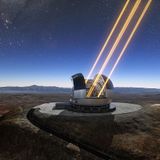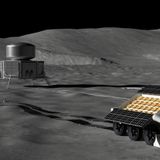RECENT ARTICLES

Ground-Based Lasers Could Push Space Debris off Collision-Course Orbits
Researchers at the Australian National University (ANU) are finding new uses for the laser-based technology that sharpens telescope imagery – called adaptive optics – and it just might help mitigate the world’s growing space debris problem. Purpose-built lasers could give derelict satellites a slight ‘push’ of photons, imparting just enough energy to change the debris’s orbit and prevent an impending collision.Lasers have a long history in astronomy. Telescopes in space, like Hubble, are able to take spectacular images because they don’t have to deal with atmospheric distortion (the effect...…Researchers at the Australian National University (ANU) are finding new uses for the laser-based technology that sharpens telescope imagery – called adaptive optics – and it just might help mitigate the world’s growing space debris problem. Purpose-built lasers could give derelict satellites a slight ‘push’ of photons, imparting just enough energy to change the debris’s orbit and prevent an impending collision.Lasers have a long history in astronomy. Telescopes in space, like Hubble, are able to take spectacular images because they don’t have to deal with atmospheric distortion (the effect...WW…

NASA is Considering a Radio Telescope on the Far Side of the Moon
The University of Colorado Boulder and Lunar Resources Inc. have just won NASA funding to study the possibility of building a radio telescope on the far side of the Moon. The project, called , would harvest building materials from the Lunar surface itself, and use robotic rovers to construct a massive, intricate network of wires and antennas across 400 square kilometers. When complete, FarView would allow radio astronomers to observe the sky in low-frequency radio wavelengths with unprecedented clarity.Radio telescopes work best in isolation. On Earth, if radio telescope operators want to...…The University of Colorado Boulder and Lunar Resources Inc. have just won NASA funding to study the possibility of building a radio telescope on the far side of the Moon. The project, called , would harvest building materials from the Lunar surface itself, and use robotic rovers to construct a massive, intricate network of wires and antennas across 400 square kilometers. When complete, FarView would allow radio astronomers to observe the sky in low-frequency radio wavelengths with unprecedented clarity.Radio telescopes work best in isolation. On Earth, if radio telescope operators want to...WW…
- Total 2 items
- 1